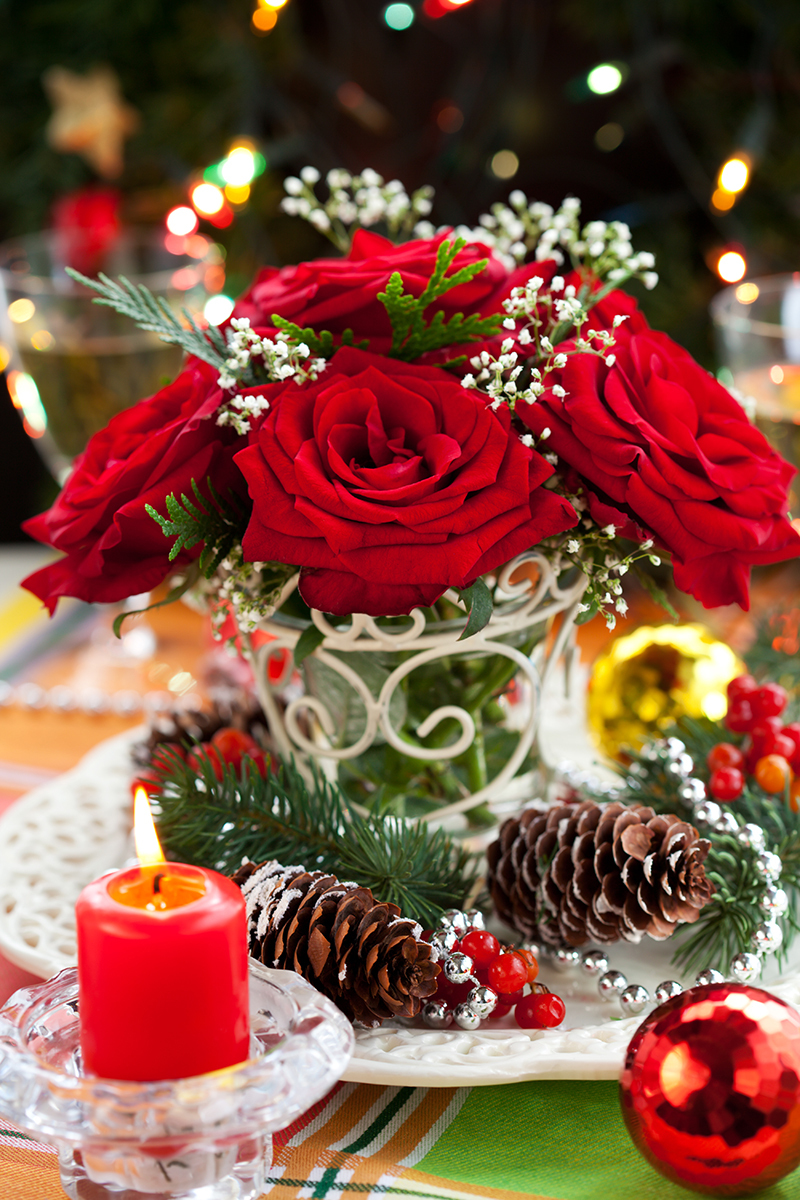Hydrangea Heaven: Cultivating Vibrant Blooms
Posted on 29/08/2025
Hydrangea Heaven: Cultivating Vibrant Blooms
Are you dreaming of a flourishing garden adorned with spectacular colors and lush, voluminous blossoms? Hydrangeas could be your pathway to horticultural paradise. Known for their breathtaking flower clusters and range of hues from pinks and blues to snowy whites, hydrangeas are beloved by both beginner and experienced gardeners. This comprehensive guide will walk you through everything you need to know about cultivating vibrant hydrangea blooms, transforming your space into a true Hydrangea Heaven.
Understanding the Magic of Hydrangeas
There's something truly enchanting about hydrangeas, with their dramatic spheres of blossoms and elegant foliage. Before diving into growing tips, let's look at what makes hydrangeas so unique:
- Varied Blooms: Hydrangeas come in many varieties, such as Hydrangea macrophylla (Bigleaf), Hydrangea paniculata (Panicle), Hydrangea arborescens (Smooth), and Hydrangea quercifolia (Oakleaf). Each offers distinct shapes, sizes, and color capabilities.
- Color-Changing Ability: One of the hydrangea's most exciting qualities is its ability to change color based on soil pH. Pink, blue, and even purple shades are possible by adjusting soil chemistry.
- Season-Long Interest: Many hydrangeas bloom from spring to late summer, offering beautiful transitions and extended enjoyment in your garden.

Selecting the Perfect Hydrangea for Your Garden
Hydrangea cultivation success begins with choosing the right type for your site conditions and aesthetic goals. Some key options include:
Bigleaf Hydrangea (Hydrangea Macrophylla)
- Features: Large, mophead or lacecap flower clusters; colors range from blue, pink to purple, depending on soil.
- Best For: Color diversity, classic cottage gardens, shaded or partially shaded locations.
Panicle Hydrangea (Hydrangea Paniculata)
- Features: Cone-shaped blooms; excellent tolerance for sun and cold. Flowers often start white and age to pink.
- Best For: Sunny beds, creating dramatic vertical interest, easy maintenance.
Smooth Hydrangea (Hydrangea Arborescens)
- Features: Rounded blossoms, typically white or light green, thriving even in tough soils.
- Best For: Naturalistic landscapes, low-maintenance gardens.
Oakleaf Hydrangea (Hydrangea Quercifolia)
- Features: Distinctive oak-shaped leaves, panicle blooms turning from white to pink, spectacular fall foliage color.
- Best For: Woodland gardens, four-season interest, textural contrast.
Proper Placement: Creating Your Hydrangea Haven
Where you plant your hydrangeas can make or break your attempts at cultivating vibrant hydrangea flowers. Here's what you need to consider:
- Light: Most hydrangeas prefer morning sun and afternoon shade. However, panicle types tolerate more sun. Avoid deep shade, which inhibits blooming.
- Soil: Hydrangeas love moist, rich, well-drained soils. If your soil is heavy clay or drains too quickly, amend with organic matter before planting.
- Air Circulation: Good airflow prevents leaf spot and mildew. Space plants to allow room for growth.
- Shelter: Protect hydrangeas from harsh winter winds and late spring frosts that can damage buds.
Preparing the Perfect Home: Soil and Amendments
To achieve those jaw-dropping, vibrant hydrangea blooms, start with the soil. Here's how to prepare the ideal environment:
- Test Your Soil: Use a home soil test kit to determine pH and nutrient levels. Hydrangeas flourish in slightly acidic to neutral soils (pH 5.5 to 6.5).
- Amend as Needed: Add compost, peat moss, or well-rotted manure to increase organic matter. For clay soils, incorporate gypsum or sand to improve drainage.
- Mulch Generously: Apply a 2-3 inch mulch layer to conserve moisture, moderate soil temperature, and deter weeds.
- Moisture Retention: Hydrangeas need consistent moisture but don't like "wet feet." Ensure soil drains well, but doesn't dry out completely.
Hydrangea Care: The Essentials for Prolific Blooms
Watering Wisely
Hydrangeas are notorious for wilting if they get too dry. However, overwatering can lead to root rot. Follow these watering tips for vibrant hydrangea flowers:
- Frequency: Water deeply once or twice a week, depending on rainfall and soil type.
- Time: Morning watering is best to prevent diseases.
- Mulch: Maintain mulch to stabilize moisture levels.
Feeding for Flourishing Blooms
Fertilize hydrangeas to fuel strong growth and abundant flowers. Here's how:
- When: Apply a slow-release, balanced fertilizer in early spring as new growth appears.
- How Much: Do not overfeed--excess fertilizer can damage roots and reduce blooming. Follow package instructions carefully.
Pruning for Health and Beauty
Pruning hydrangeas can seem daunting, but getting it right is essential for hydrangea heaven!
- Bigleaf and Oakleaf Hydrangeas: Prune after blooming in midsummer, removing deadwood and shaping the shrub. These set buds on the previous year's growth, so avoid late fall or spring pruning.
- Panicle and Smooth Hydrangeas: Prune in late winter or early spring since they bloom on new growth.
- General Tip: Remove spent blooms ("deadheading") regularly to encourage more flowers.
Color Chemistry: Achieving Blue, Pink, and Purple Hydrangeas
Did you know you can influence hydrangea flower color simply by changing your soil's pH? This phenomenon primarily affects bigleaf hydrangeas (Hydrangea macrophylla):
- Blue Blooms: Acidic soils (pH below 5.5) cause hydrangeas to produce blue flowers. Add aluminum sulfate or organic mulches like pine needles to lower pH.
- Pink Blooms: Alkaline soils (pH above 6.0) yield pink flowers. Liming the soil with garden lime raises pH and suppresses aluminum uptake.
- Purple Hues: Intermediate pH can result in shades of lavender or purple. Adjust gradually and monitor changes each season.
Pro Tip: Once buds form, changes may not take effect until the following year, so be patient as you adjust your pH!
Common Hydrangea Problems and Solutions
Even in a true hydrangea paradise, challenges can arise. Here's how to keep your plants looking their best:
- Wilting: Most often a sign of underwatering but can also indicate root rot. Check the roots and ensure proper drainage.
- Leaf Spot and Mildew: Fungal diseases are common in humid conditions. Water at the soil level, prune to increase air circulation, and use fungicidal sprays if necessary.
- No Blooms: Usually caused by improper pruning, winter damage to buds, or over-fertilization. Be sure you know your hydrangea type and prune accordingly.
- Yellow Leaves: Often due to overwatering, nutrient deficiency, or alkaline soil for species that prefer acidity.
Hydrangea Propagation: Multiply Your Magic
Why settle for just one hydrangea, when you can fill your garden (or share with friends) by propagating more? Try these simple propagation methods:
Cuttings Method
- When: Take softwood cuttings in late spring or early summer.
- How: Cut 4-6 inch branches just below a leaf node, remove lower leaves, and dip in rooting hormone. Place in moist, sterile potting mix and cover with a plastic dome.
- Care: Keep warm and humid until rooted, then gradually acclimate to the outdoors.
Layering Technique
- When: Early growing season is best.
- How: Bend a low-growing branch to the ground, wound the stem slightly, and cover with soil. Secure in place and keep moist. After roots form, sever from the parent plant.
Creative Uses for Hydrangeas in Garden Design
The lush, romantic nature of hydrangeas lends itself to virtually any landscape style. Bring your own hydrangea heaven to life with these design ideas:
- Foundation Plantings: Hydrangeas soften the lines of homes and buildings, providing a welcoming, classic look.
- Hedge or Screen: Rows of hydrangeas create privacy and a living wall of color and texture.
- Mixed Borders: Combine hydrangeas with roses, astilbe, ferns, or ornamental grasses for maximum visual impact.
- Containers: Compact varieties are perfect for pots and patio displays that can be moved for optimal light.
- Cut Flower Arrangements: Hydrangeas are staples for bouquets and dried flower crafts, bringing garden beauty indoors.
Seasonal Care Calendar: Hydrangea Year-Round Maintenance
Want your hydrangeas to truly thrive every year? Follow this simple, season-by-season guide:
- Spring: Fertilize, apply fresh mulch, prune (if panicle or smooth varieties), check for winter damage.
- Summer: Water deeply, deadhead spent blooms, monitor for pests, and enjoy the vibrant show!
- Fall: Clean up foliage, amend soil if adjusting pH, reduce watering as plants go dormant.
- Winter: Protect roots with extra mulch, especially in cold climates. Avoid heavy pruning.

Frequently Asked Questions about Hydrangea Cultivation
Why are my hydrangea flowers green?
Some hydrangea varieties, especially panicle and smooth types, start off green and mature to white, pink, or red. Excess nitrogen and low sunlight can also cause muted colors. Make sure your plants are getting enough light and the right fertilizer.
How do I revive a struggling hydrangea?
First, diagnose the issue: check the moisture level, look for mildew or rot, and review your fertilizing and pruning habits. Remove dead or diseased wood, mulch, and water well. Hydrangeas are resilient and often bounce back with attention.
Can hydrangeas grow in pots?
Absolutely! Choose dwarf or compact cultivars, provide a rich, well-draining potting mix, and ensure adequate watering. Pots can be relocated for best light exposure and brought indoors in severe cold.
Are hydrangeas deer resistant?
Unfortunately, hydrangeas are not deer-proof. Protect young plants with fencing or repellents if deer are in your area.
Experience Hydrangea Heaven: Transform Your Garden Today!
With their captivating flower heads and unmatched garden charm, hydrangeas are truly the stars of any landscape. By choosing suitable varieties, planting in the perfect spot, using the right soil amendments, and following essential care practices, you can enjoy a breathtaking display of vibrant hydrangea blooms year after year.
Remember, patience and consistent attention to your plants' needs will reward you with a magical, ever-changing palette of hues and forms--your own personal Hydrangea Heaven. Are you ready to cultivate the lushest, most colorful blooms on the block? Dive in, and let hydrangeas unlock the true potential of your garden--or balcony--today!
Latest Posts
Hydrangea Heaven: Cultivating Vibrant Blooms
A Journey into Peony Flowers: Exploring Their Symbolic and Colorful Impact
Caring for Orchids: Expert Advice Revealed






